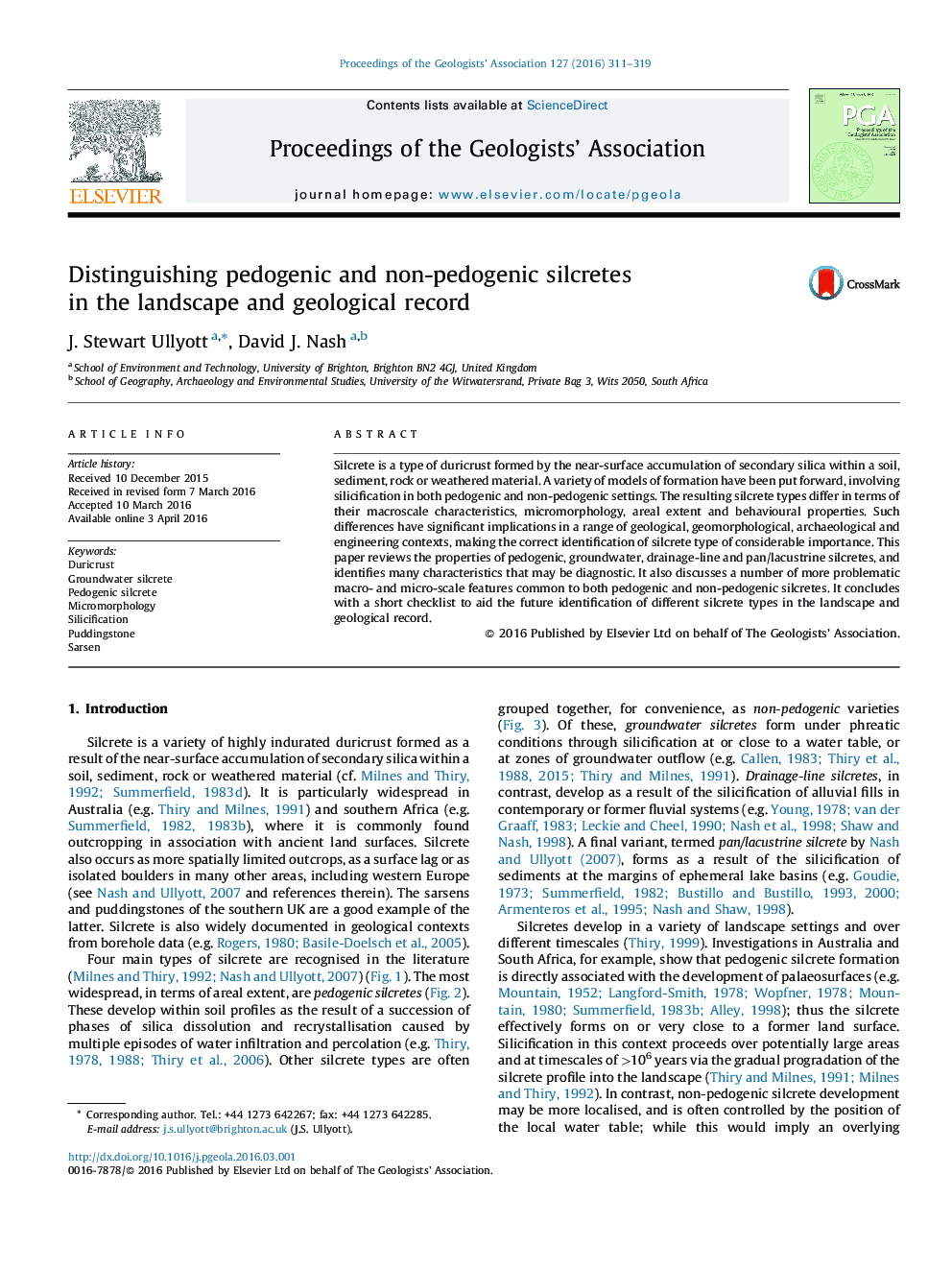| Article ID | Journal | Published Year | Pages | File Type |
|---|---|---|---|---|
| 4734578 | Proceedings of the Geologists' Association | 2016 | 9 Pages |
Silcrete is a type of duricrust formed by the near-surface accumulation of secondary silica within a soil, sediment, rock or weathered material. A variety of models of formation have been put forward, involving silicification in both pedogenic and non-pedogenic settings. The resulting silcrete types differ in terms of their macroscale characteristics, micromorphology, areal extent and behavioural properties. Such differences have significant implications in a range of geological, geomorphological, archaeological and engineering contexts, making the correct identification of silcrete type of considerable importance. This paper reviews the properties of pedogenic, groundwater, drainage-line and pan/lacustrine silcretes, and identifies many characteristics that may be diagnostic. It also discusses a number of more problematic macro- and micro-scale features common to both pedogenic and non-pedogenic silcretes. It concludes with a short checklist to aid the future identification of different silcrete types in the landscape and geological record.
